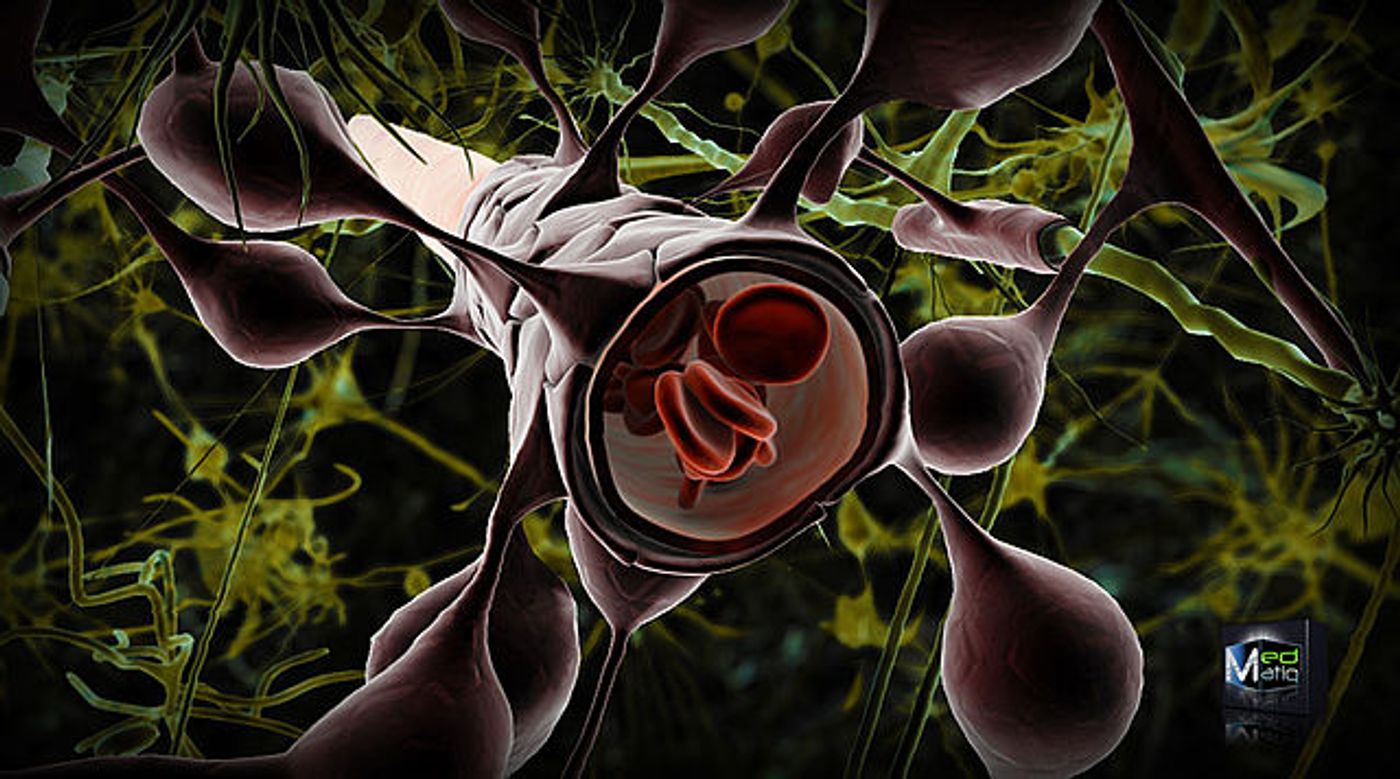The blood brain barrier, or BBB, is essentially the gatekeeper of the brain. Certain substances can pass through it, but most cannot. It’s the body’s way of protecting brain tissue from neurotoxins and infections. The flip side is that sometimes the BBB can inhibit treatment of brain infections and tumors. Finding out how to breach this barrier has been the focus of many studies and research projects and some scientists in Canada may finally have found a way.
First, an explanation of how the BBB works. It’s all about the blood vessels. In most parts of the body, the smallest blood vessels, called capillaries, are lined with endothelial cells. These cells have spaces between them so that anything ingested can pass in to or out of the blood stream. Capillaries in the brain are different though. Endothelial cells there are joined together tightly, essentially saying ‘None shall pass’ so most substances cannot get through. In addition there are Glial cells (astrocytes) that form a layer around brain blood vessels and these cells make the barrier even more difficult to cross.
New information from Canada suggests that a research team at Sunnybrook Health Science Centre may have found the way in. Using focused ultrasound researchers in Toronto demonstrated a way to breach the BBB and believe this method will be a significant advance in treating brain cancer and perhaps other neurological conditions as well.
Dr. Todd Mainprize was the principal investigator in the study. He is a neurosurgeon at in the Hurvitz Brain Sciences Program at Sunnybrook and
in a press release he stated, “The blood-brain barrier (BBB) has been a persistent obstacle to delivering valuable therapies to treat disease such as tumours. We are encouraged that we were able to temporarily open this barrier in a patient to deliver chemotherapy directly to the brain tumour.”
How did they do it? In a sense, they shook things up a little. They combined a chemotherapy drug along with microscopic air bubbles that are even smaller than red blood cells and infused the mixture into the bloodstream of a patient suffering from a malignant brain tumor. Using MRI to guide them, the doctors focused sound waves from a low –intensity ultrasound machine on the blood vessels in the same area as the tumor. The ultrasound caused the bubbles to expand and contract, producing vibrations that loosened the bonds of the cells in the BBB. Once these tight junctions were opened a bit, the chemo could slip through and go on its way to the effected area of the brain.
Getting through the barrier was only the first part of the equation. The team at Sunnybrook wanted to know if the tumor fighting drugs had made a difference in the brain tissue. Almost immediately after infusion, the tumor was removed surgically along with some parts of the surrounding area. The samples are currently being analyzed by the team to check the levels of chemo in the tumor and other areas to see how much of the drug was able to get where it was most needed.
The procedure done recently was the first of a total of ten patients that have agreed to be part of the study. The doctors and researchers in Toronto hope to test the technique on more patients before they publish any results. Check out the video below from Sunnybrook to hear more from the doctors who performed this groundbreaking procedure.









